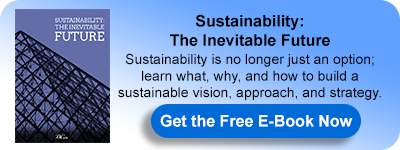Planning Business Sustainability: A Natural Step to Ease the Transition
Last September, I had the opportunity to travel to Sweden with a delegation from our company. The purpose of the visit was to gain deeper insight into the fields of strategic planning for sustainability, innovating for sustainability, and social innovation. Sustainable development has been a key objective for the Swedish government for many years and the country is at the forefront of renewable energy, production of organic food and apparel as well as recycling and waste management. The interesting thing about Sweden is that the efforts to create a sustainable society is not solely relying on corporations trying to comply with government regulations – rather it is driven by corporations seeing sustainability as a way of gaining a competitive edge and increasing growth.
An international network of scientists has collectively and publicly defined four basic “system conditions” that must be met for Earth to continue to provide the life-supporting natural structures and functions that sustain human life. To become sustainable, our society must eliminate:
- Systematically increasing the amount of materials we remove from the Earth such as heavy metals and fossil fuels
- Systematically increasing the amount of society produced substances such as plastics, PCBs, and dioxins
- Systematic physical obliteration of nature and natural activities; for example, overfishing, damaging habitats, and forest destruction
- Systematical eradication of people’s ability to meet their basic human needs
In this blog post, I will briefly summarize one of the frameworks many Swedish corporations utilize in their sustainability efforts; the Natural Step. The Natural Step is a strategic framework developed by Dr. Karl-Henrik Robert that enables organizations to innovate and find new paths for strategic growth that contribute to ecological and social sustainability. The Framework for Strategic Sustainable Development (FSSD) is a step-by-step strategic method that helps corporations and other organizations place themselves in the broader context of sustainability. FSSD is built around a strong, science-based definition of sustainability meaning that each and every principle contained in the framework is both necessary and enough to achieve sustainability.
1. Awareness and Visioning
The first step involves an organizational review of the actual state of the earth’s systems, ecological, social, and economic trends that are weakening our ability to originate and maintain healthy ecosystems, businesses, and communities. With that knowledge, businesses are then asked to place their own organization within that context and create an image of what their business would look like in a sustainable future. Ambitious goals are encouraged that may require significant changes and years to reach. Often organizations are innovated by the visioning process.
2. Baseline Mapping
The second step uses sustainability principles to perform a gap analysis of organizational activities that are contradictory to sustainability. Products, services, capital resources, energy, and human resources are evaluated during the process. Basing mapping includes an analysis of the business culture and social environment that will be impacted by changes. Second step results will be the ability of the organization to identify the main sustainability issues they will be facing, the business implications, and change opportunities that are in existence.
3. Innovative Solutions
The third step requires businesses to brainstorm possible solutions to significant issues identified in the baseline analysis. With the insight attained from Step 1 of awareness and visioning, organizations look backward from their vision to cultivate strategies that lead to sustainability. This process called back casting is very different from the more widely used strategic planning method of forecasting, which is an approach used to project from current trends in order to predict the future. While forecasting is helpful to identify future risk, back casting is a superior method when planning for a sustainable business since the goal is a more desirable future, not the likely one. Back casting counteracts businesses from developing stratagems that are useful just for today because it begins with the desired end in mind. The desired end leads to the creation of strategies through a shared vision of sustainability and every achievement develops a platform for additional improvement.
4. Identifying Priorities
Step 3 distinguishes possible solutions and opportunities for the organization while Step 4 bolsters effective step-by-step application and action planning. Organizational priorities will include the following considerations:
- Actions that move the business toward sustainability most rapidly
- Actions that enhance flexibility
- Actions that increase social, economic, and ecological returns
Some actions will be simpler to implement than others while offering quick return on investments. These initial actions often create internal strength and encouragement for the process. Back casting is continual throughout to ascertain the organization is moving toward their desired outcome.
The FSSD provides a powerful structure and methodology for sustainable innovation by letting innovation, for both products and business models, be shaped by environmental, social and economic measures. What is even more important is that the framework has proven to have a positive impact on bottom-line business while reducing negative impact on social and ecological systems.
For more about the topic of sustainability, download our latest book " Sustainability: The Inevitable Future " for FREE:
